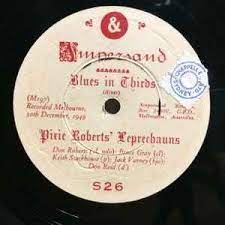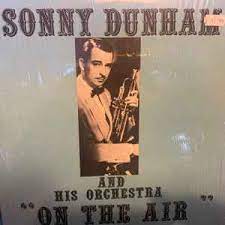
Daily Dose Of Jazz…
Don Stovall was born on December 12, 1913 in St. Louis, Missouri. He began playing violin as a child before settling on the alto saxophone. He played around his hometown with Dewey Jackson and Fate Marable on riverboats in the 1920s, and then played with Eddie Johnson’s Crackerjacks in 1932-33.
During the 1930s he lived in Buffalo, New York where he led his own ensemble and played with Lil Armstrong. He moved to New York City in 1939, and played there with Sammy Price, Eddie Durham, and Cootie Williams.
Following this he recorded extensively with Red Allen, remaining with him until 1950. He also recorded with Pete Johnson and Snub Mosley over the course of his career, though he never recorded as a leader.
Retiring from the music industry in 1950 he spent the remainder of his life working for a telephone company. Alto saxophonist Don Stovall transitioned on November 20, 1970 in New York City.
More Posts: history,instrumental,jazz,music,saxophone

Daily Dose Of Jazz…
Donald Bruce Roberts was born on December 4, 1917 in Melbourne, Australia and studied both clarinet and saxophone. Known to the world by his nickname Pixie, he started his music career in the 1930s.
Over the course of his career Pixie was a member of the Don Roberts’ Wolf Gang, Graeme Bell And His Australian Jazz Band, Graeme Bell And His Dixieland Jazz Band, Graeme Bell And His Orchestra, Graeme Bell’s Original Four, Pixie Roberts’ Leprechauns, Roger Bell’s Jazz Gang, The Bell-Lyttelton Jazz Nine, The Bell-Lyttelton Jazz Ten, The Bell-Lyttelton Jazz Twelve.
He was among the co-founders of the Australian jazz label Swaggie Records. Clarinetist and saxophonist Pixie Roberts transitioned on August 16, 1992 in his home city of Melbourne. He was 74.

Daily Dose Of Jazz…
Ike Isaacs was born on December 1, 1919 in Rangoon, Burma and was self-taught on guitar. He started playing professionally in college while pursuing a degree in chemistry. Moving to England in 1946, he became a member of the BBC Show Band.
During the 1960s and Seventies, he was a member of the Hot Club of London, led by guitarist Diz Disley, who often collaborated with Stéphane Grappelli. He was a member of the band Velvet with Digby Fairweather, Len Skeat, and Denny Wright.
He recorded not only with Grappelli but with Ted Heath, Barney Kessel, Barry Gray, Jake Thackray, Martin Taylor and Stan Tracey. In the 1980s, he moved to Australia and taught at the Sydney School of Guitar.
Guitarist Ike Isaacs, best known for his work with violinist Stéphane Grappelli, transitioned from cancer on January 11, 1996 at the age of 76 in Sydney, Australia.

Daily Dose Of Jazz…
Joe “Bebop” Carroll was born Joseph Paul Taylor in Philadelphia, Pennsylvania on November 25, 1919. In 1949 he became a member of the Dizzy Gillespie big band. After the band broke up a year later, Carroll continued in a small group formed by Gillespie. In 1953, he left Gillespie to pursue a solo career and recorded albums for Epic Records in the 1950s.
Vocalist Joe Carroll, whose collaborations with Gillespie included the humorous songs Swing Low, Sweet Cadillac and Oo Bla Dee, transitioned on February 1, 1981.
More Posts: bandleader,history,instrumental,jazz,music,vocal

Daily Dose Of Jazz…
Elmer “Sonny” Dunham was born November 16, 1911 in Brockton, Massachusetts and attended local schools, taking lessons on the valve trombone at the age of 7. He changed to the slide trombone at the age of 11, and was playing in local bands at 13. He began his musical career as a trombone player in the Boston, Massachusetts area.
By the late 1920s he had moved to New York City where he played with Ben Bernie for six months before moving on in 1929 to Paul Tremaine’s Orchestra. He remained there for two years and while working as an arranger and vocalist with Tremaine’s group he switched to the trumpet.
In 1931 he left Tremaine and for a few months led his own group, calling it Sonny Dunham and his New York Yankees. That same year along with clarinettist Clarence Hutchenrider, trombonist-singer Pee Wee Hunt and singer Kenny Sargent, he was recruited by Glen Gray for Gray’s Casa Loma Orchestra. During the golden years of Casa Loma, he was a popular soloist, scoring a big hit with his trumpet work on Memories of You. He stayed until 1936, when he formed another more unusual group, Sonny Lee and The New Yorkers Band, which featured 14 pieces, with ten of his musicians doubling on trumpet.
Moving to Europe for three months, he then returned to the Casa Loma Orchestra, remaining until 1940 when he tried again to form his own group, this time, with more success. They debuted in 1940 at the Glendale Auditorium in Los Angeles, California and toured and held talent searches throughout the United States. After returning to New York in 1941, they were on nightly radio broadcasts at the Roseland Ballroom, and the Meadowbrook at Cedar Grove, New Jersey.
On the road in California the band played Los Angeles, were featured in the Universal picture Behind the Eight Ball with the Ritz Brothers and he served as musical director for this film, and was part of a vaudeville revue. Over the next couple of decades he would divide his time between New York and Los Angeles with stints in Chicago, Illinois. Dunham briefly experimented with dual female vocalists, Mickie Roy and Dorothy Claire, which did not turn out due to professional temperament.
Dissolving the band in 1951 Sonny joined Tommy Dorsey’s band as trumpet player, then reorganized the next year, remaining active until the decline of the big-band business. By the 1970s obscurity set in, however, he recorded playing trombone on a few LPs with Don Goldie’s Dixieland revival bands.
In the 1980s trumpeter, trombonist and bandleader Sonny Dunham, who was living in a trailer in Miami, Florida and still involved in booking bands for cruises and playing occasionally, transitioned from cancer on July 9, 1990, aged 78.
More Posts: bandleader,history,instrumental,jazz,music,trombone,trumpet



